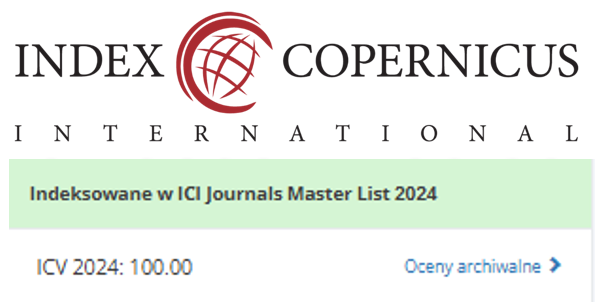Exploring Parent-Based Health Promotion Models For The Prevention Of Sexual Violence Against Children In Bekasi City: An Exploratory Sequential Mixed Study
DOI:
https://doi.org/10.55018/janh.v7i3.428Keywords:
Health Promotion, Preventive Behavior, Child Sexual Abuse, ParentsAbstract
Background: Child sexual abuse (CSA) is a serious problem that continues to increase and is often perpetrated by people close to the child, making it difficult to detect. It has a long-term impact on child development. However, systematically tested parent-based interventions are still limited, especially in Indonesia. This study aims to develop and evaluate a parent-based health promotion model to prevent CSA in Bekasi City..
Methods: This study used a sequential exploratory mixed methods design in accordance with GRAMMS guidelines. The qualitative stage involved in-depth interviews with 12 informants (perpetrators, parents of victims, and child victims of KSPA) which were analyzed thematically. The quantitative stage used a cross-sectional design with 209 respondents selected through proportional sampling in each sub-district and simple random sampling. The inclusion criteria were parents with children aged 6–13 years, cooperative, residing in Bekasi, and willing to be respondents. The data were analyzed using multivariate logistic regression (p-value) and paired samples test.
Results: Qualitative analysis identified three main themes: children's vulnerability due to lack of early sex education, permissive parenting, and parental adaptive strategies. The Handayani model identified perpetrator, child, and parental factors that influence KSPA prevention. Quantitative analysis showed that parenting (p<0.001), attitudes, perceptions, and knowledge (p<0.01) were significant. The paired samples test confirmed an increase in all variables after the intervention (p<0.001). The Handayani model proved effective as a guide for parents in improving KSPA prevention through parenting, attitudes, perceptions, and knowledge..
Conclusion: The Handayani model has been proven effective in improving parenting, attitudes, perceptions, and knowledge of parents, so that children are more aware of predators. These findings emphasize the importance of early sex education and protective parenting in family-based prevention programs
Downloads
References
Aini, N., Anggraini, I. R., & Alifatin, A. (2022). Parental Attitudes and Behaviors Towards the Prevention of Sexual Violence against Children in a Health Perspective. Malahayati Nursing Journal, 4(12), 3218-3225. https://doi.org/10.33024/mnj.v4i12.7314
Amatulah, D. A. S., & Hastuti, D. (2022). Characteristics of adolescent, family, and parenting styles on sexual violence in adolescents. Journal of Child, Family, and Consumer Studies, 1(1), 24–34. https://doi.org/10.29244/jcfcs.1.1.24-34
Azhar, N., & Doss, J. G. (2018). Health-seeking behaviour and delayed presentation of oral cancer patients in a developing country: A qualitative study based on the self-regulatory model. Asian Pacific journal of cancer prevention: APJCP, 19(10), 2935. https://doi.org/10.22034/APJCP.2018.19.10.2935
Brockstedt, M., Baysal, S. U., & Daştan, K. (2025). The impact of domestic violence and sexual assault on family dynamics and child development: A comprehensive review. Turkish Archives of Pediatrics, 60(1), 5. https://doi.org/10.5152/TurkArchPediatr.2025.24169
Dzunnuroin, N. R., Julianingrum, P. P., & Rahmawati, I. (2023). Relationship between personality type and self-control with cyberbullying behavior in adolescents. Pediomaternal Nursing Journal, 9(1), 6-12. http://dx.doi.org/10.20473/pmnj.v9i1.37582
Handayani, R. (2021). Karakteristik pola-pola pengasuhan anak usia dini dalam keluarga. Kiddo: Jurnal Islam Pendidikan Usia Dini, 2(2), 177–190. https://doi.org/10.19105/kiddo.v2i2.4797
Hébert, M., Langevin, R., & Oussaïd, E. (2018). Cumulative childhood trauma, emotion regulation, dissociation, and behavior problems in school-aged sexual abuse victims. Journal of affective disorders, 225, 306-312. https://doi.org/10.1016/j.jad.2017.08.044
Jin, Q., Raza, S. H., Mahmood, N., Zaman, U., Saeed, I., Yousaf, M., & Aslam, S. (2022). Exploring influence of communication campaigns in promoting regenerative farming through diminishing farmers' resistance to innovation: An innovation resistance theory perspective from Global South. Frontiers in Psychology, 13, 924896. https://doi.org/10.3389/fpsyg.2022.924896
Jin, Y., Chen, J., & Yu, B. (2019). Parental practice of child sexual abuse prevention education in China: Does it have an influence on child's outcome?. Children and Youth Services Review, 96, 64-69. https://doi.org/10.1016/j.childyouth.2018.11.029
Kaiser, F. G., & Wilson, M. (2019). The Campbell paradigm as a behavior-predictive reinterpretation of the classical tripartite model of attitudes. European psychologist. https://doi.org/10.1027/1016-9040/a000364
Karayianni, E. et al. (2017) „Prevalence, contexts, and correlates of child sexual abuse in Cyprus‟, Child Abuse and Neglect. Elsevier Ltd, 66, pp. 41–52. https://doi.org/10.1016/j.chiabu.2017.02.016
Kaufman, D. M. (2018). Teaching and learning in medical education: how theory can inform practice. Understanding medical education: evidence, theory, and practice, 37-69. https://doi.org/10.1002/9781119373780.ch4
Kishore, J., Gupta, S., & Gedam, P. (2023). Initiation of the first preventive health and screening outpatient department in a tertiary teaching hospital in India. Cureus, 15(4). https://doi.org/10.7759/cureus.38115
KNPAI, (2014). Kejahatan Seksual Terhadap Anak Di Indonesia. Https://Id.Wikipedia.Org/Wiki/Kejahatan_Seksual_Terhadap_Anak_Di_Indonesiadiun duh Pada Tanggal 17 Maret 2015.
KPAN. (2014). Data Statistik Kasus-Kasus Perlindungan Anak Tahun 2011- 2014. Jakarta, Indonesia.
KPAI. (2014). Komnas Perlindungan Anak | Komisi Perlindungan Anak Indonesia. Https://Www.Tempo.Co/Topik/Lembaga/409/Komnas-Perlindungan- Anak-Komisi-Perlindungan-Anak-Indonesia Diunduh Pada Tanggal 17 Maret 2015.
Kusuma, W. A., Hayatuddin, K., & Mahfuz, A. L. (2022). Perlindungan hukum terhadap anak pelaku kejahatan ketika diadili sudah berumur lebih dari 18 tahun berdasarkan Undang-Undang Sistem Peradilan Pidana Anak. Jurnal Tana Mana, 3(2), 187–198. https://doi.org/10.33648/jtm.v3i2.241
Mainnah, M., Fajriah, H., & Roemin, L. (2021). Pola asuh orangtua pada anak usia dini di TK Tiga Serangkai Desa Meureubo Kabupaten Aceh Barat. Gender Equality: International Journal of Child and Gender Studies, 7(1), 57–68. https://doi.org/10.22373/equality.v7i1.8536
Ningzi, V. J., & Nurhayati, N. (2024). The students' learning behavior is reviewed from parenting patterns. Proceeding of International Conference on Education (ICon), 3, 1–8. https://doi.org/10.30631/picon.v3i.100
Nurbavani, S., Malihah, E., Dede, M., & Widiawaty, M. A. (2022). A Family-Based Model to Prevent Sexual Violence on Children. International Journal of Body, Mind & Culture (2345-5802), 9(3). https://doi.org/10.22122/ijbmc.v9i3.397
Nurhidayah, I., & Ligina, N. L. (2018). The Role of Parents in Preventing Sexual Violence on Elementary School children in Bandung. Jurnal Keperawatan, 9(2), 109-118. https://doi.org/10.22219/jk.v9i2.5454
Park, J., Lee, S., Brotherton, K., Um, D., & Park, J. (2020). Identification of speech characteristics to distinguish human personality of introversive and extroversive male groups. International Journal of Environmental Research and Public Health, 17(6), 2125. https://doi.org/10.3390/ijerph17062125
Pinandari, A. W., Kågesten, A. E., Li, M., Moreau, C., van Reeuwijk, M., & Wilopo, S. A. (2023). Short-term effects of a school-based comprehensive sexuality education intervention among very young adolescents in three urban Indonesian settings: A quasi-experimental study. Journal of Adolescent Health, 73(1), S21-S32. https://doi.org/10.1016/j.jadohealth.2023.01.030
Pisarchik, A. N., & Hramov, A. E. (2023). Stochastic processes in the brain's neural network and their impact on perception and decision-making. Physics-Uspekhi, 66(12), 1224–1247. https://doi.org/10.3367/UFNe.2023.06.039567
Rokhmah, D., Susanto, T., Salma, J. M., & Limbong, A. M. B. (2023). Family-Based Model of Children's Sexual Abuse and Violence Prevention Using Maternal Responsiveness Method at Jember Regency. NurseLine Journal, 8, 34-39. https://doi.org/10.19184/nlj.v8i1.30749
Rudolph, J., & Zimmer-Gembeck, M. J. (2018). Parents as protectors: A qualitative study of parents’ views on child sexual abuse prevention. Child abuse & neglect, 85, 28-38. https://doi.org/10.1016/j.chiabu.2018.08.016
Rumble, L., Febrianto, R. F., Larasati, M. N., Hamilton, C., Mathews, B., & Dunne, M. P. (2020). Childhood sexual violence in Indonesia: a systematic review. Trauma, violence, & abuse, 21(2), 284-299. https://doi.org/10.1177/1524838018767932
Setiyowati, T., Fatchiya, A., & Amanah, S. (2022). Pengaruh karakteristik petani terhadap pengetahuan inovasi budidaya cengkeh di Kabupaten Halmahera Timur. Jurnal Penyuluhan, 18(2), 38–47. https://doi.org/10.25015/18202239038
Sigurdardottir, S., & Halldorsdottir, S. (2021). Persistent suffering: The serious consequences of sexual violence against women and girls, their search for inner healing and the significance of the# MeToo movement. International journal of environmental research and public health, 18(4), 1849. https://doi.org/10.3390/ijerph18041849
Wismayanti, Y. F., O’Leary, P., Tilbury, C., & Tjoe, Y. (2019). Child sexual abuse in Indonesia: A systematic review of literature, law and policy. Child abuse & neglect, 95, 104034. https://doi.org/10.1016/j.chiabu.2019.104034.
Downloads
Published
How to Cite
Issue
Section
License
Copyright (c) 2025 Handayani Handayani, Nurul Husnul Lail

This work is licensed under a Creative Commons Attribution-ShareAlike 4.0 International License.


















